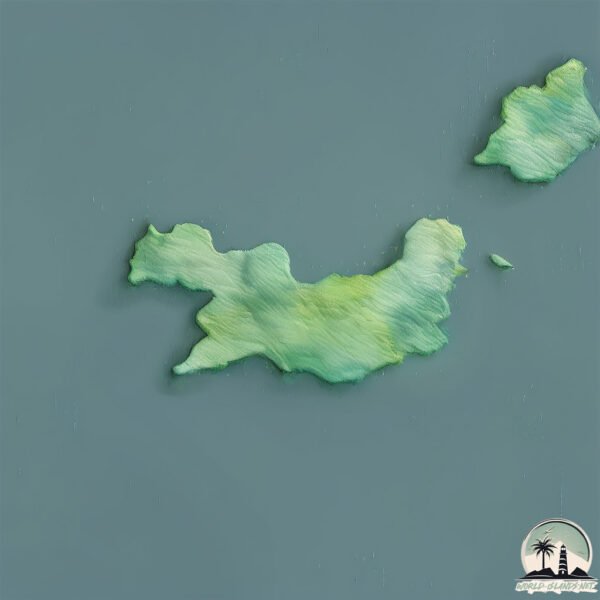Welcome to Badger , a Temperate island in the Bass Strait, part of the majestic Pacific Ocean. This guide offers a comprehensive overview of what makes Badger unique – from its geography and climate to its population, infrastructure, and beyond. Dive into the details:
Geography and size of Badger
Size: 13.3 km²Coastline: 32.3 kmOcean: Pacific OceanSea: Bass StraitContinent: Oceania
Badger is a Medium Island spanning 13 km² with a coastline of 32 km.
Archipel: –
Tectonic Plate: Australia – A major tectonic plate covering Australia, New Zealand, and parts of the Indian and Pacific Oceans, known for its relative stability and occasional seismic activity.
The geographic heart of the island is pinpointed at these coordinates:
Climate and weather of Badger
Climate Zone: TemperateClimate Details: Temperate Oceanic ClimateTemperature: Warm Summer
Climate Characteristics: Known for its moderate year-round temperatures with ample rainfall and no dry season. Warm summers are characteristic.
Topography and nature of Badger
Timezone: UTC+10:00Timezone places: Australia/SydneyMax. Elevation: 17 m Mean Elevation: 10 mVegetation: Open WoodlandTree Coverage: 63%
The mean elevation is 10 m. The highest elevation on the island reaches approximately 17 meters above sea level. The island is characterized by Plains: Flat, low-lying lands characterized by a maximum elevation of up to 200 meters. On islands, plains are typically coastal lowlands or central flat areas.
Dominating Vegetation: Open Woodland
Vegetation: 5 vegetation zones – Highly Diverse Island
Infrastructure and Travelling to Badger
Does the island have a public airport? no .
Does the island have a major port? no .
The mean population of Badger is 0 per km². Badger is Uninhabited. The island belongs to Australia .
Continuing your journey, Prime Seal is the next notable island, situated merely km away.
Monday, July 15th: Exploring Badgers Island
Food and views right across The Piscataqua Subscribe to WMUR on YouTube now for more: http://bit.ly/1lOjX9C Get more ...
Monday, July 15th: Exploring Badgers Island
Food and views right across The Piscataqua Subscribe to WMUR on ...
Food and views right across The Piscataqua Subscribe to WMUR on YouTube now for more:
http://bit.ly/1lOjX9C Get more ...
Badger's Island - Adventures ahead
Spring is just around the corner and so is my 3 week trip to Svalbard. ...
Spring is just around the corner and so is my 3 week trip to Svalbard. I have started the usual preparations to this years badger ...
Lobster Rolls & More from Buoy Shack on Badgers Island, Kittery ME
Not only does the Buoy Shack boast a beautiful waterfront location, it ...
Not only does the Buoy Shack boast a beautiful waterfront location, it also claims a special geographical distinction. As one of the ...
Australia is classified as Developed region: nonG7: Developed economies outside of the Group of Seven, characterized by high income and advanced economic structures. The level of income is High income: OECD.
News – Latest Updates and Headlines from Badger
Stay informed with the most recent news and important headlines from Badger. Here’s a roundup of the latest developments.
Loading...
Please note: The data used here has been primarily extracted from satellite readings. Deviations from exact values may occur, particularly regarding the height of elevations and population density. Land area and coastline measurements refer to average values at mean high tide.

